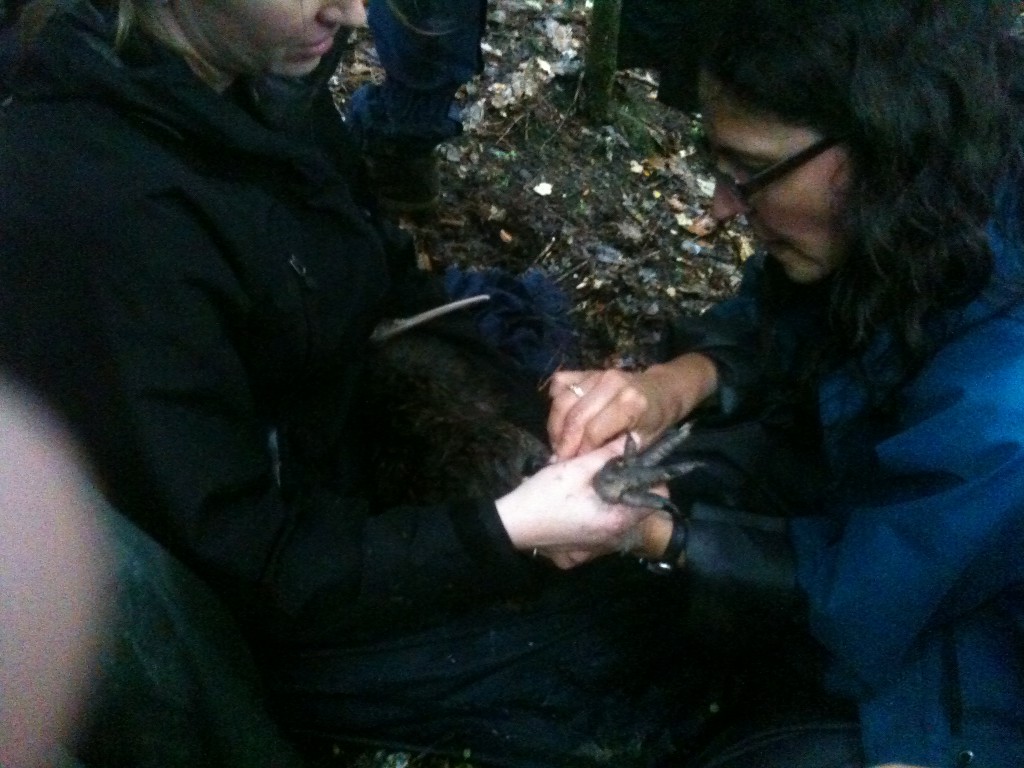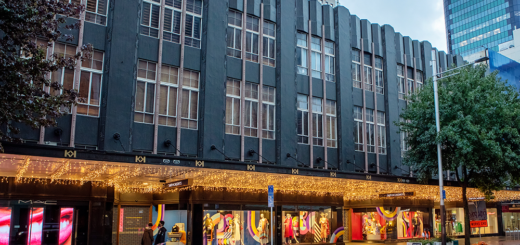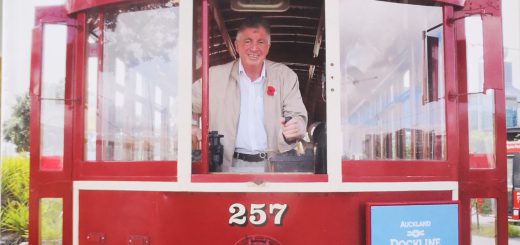Rediscovered! Ponui Island’s ‘lost tribe’ of kiwi
First published 25/04/11
Paragraph
Ponui Island (its literal translation means ‘big night’) which is just 18km from downtown Auckland is one of Waiheke’s closest neighbours (only 2km away) but one of those quiet neighbours that keep itself very much to itself.
The island is one of the larger Gulf islands at 1795 ha and though it is extensively farmed it has good areas of quite luxuriant kauri forest in relatively rare association with hard beech (Nothofagus truncata). The island is totally privately owned and there is no public access. Another name for Ponui is ‘Chamberlins Island’ as the island has been in continuous ownership and farmed by the pioneering Chamberlin family since 1853.
The island is now divided into three farms – two owned by branches of the
Chamberlin family and one by business mogul John Spencer.
Ponui is also an interesting Waiheke neighbour because of the remarkably high numbers of endangered brown kiwi – NZ’s national bird – that live there.
North Island brown kiwi were first released on Ponui in 1964 by the old NZ Wildlife Service. There were only 14 birds released but they came from a remarkably wide variety of source populations. The birds released on Ponui came from Hauturu – Little Barrier Island – a population believed to be made up of both indigenous Little Barrier birds and Taranaki birds released on Hauturu earlier in the 20th century. A handful of birds came from Waipoua in Northland plus a rumoured single bird from Coromandel. The ‘mixed race’ nature of the birds is interesting (and problematic to some scientists) as they no longer fit into the four distinct North Island brown kiwi taxons which genetic scientists have identified. On the other hand given kiwi once existed as a contiguous population all over the North Island it is suggested that the original kiwi that lived in the Auckland region, on places like Ponui and Waiheke, actually would probably have had a genetic make-up pretty much like the present Ponui kiwi.
About 5 years ago Massey University scientist Dr Isabel Castro thought it timely to check up on what had actually happened to the Ponui kiwi population. Much to everyone’s surprise Isabel and her researchers discovered that the kiwi population on Ponui had not only survived but thrived. At an estimated 1500 birds the Ponui population makes up a remarkable 6% of the country’s entire brown kiwi population. And given brown kiwi are endangered and nationally in decline this should make the Ponui kiwi population one of national importance – and their survival success scientifically interesting.
Landowners Peter Chamberlin and his son David and their family have always taken a keen interest in the wellbeing of their feathered guests. Indeed the introduction was Peter’s idea. Valuing the privacy of the ancestral island home they have nevertheless welcomed and actively assisted Isabel Castro and her research team. For the past five years the formidable Dr Castro has had a team of up to 20 young scientists studying every aspect of the kiwi and its ecology.
Among the wealth of data they have collected is that the kiwi population on Ponui has been so successful that it is now reaching the maximum level of the island’s natural carrying capacity.
I had been following Dr Castro’s work on Ponui with some interest
I was also aware that Waiheke conservationist Rob Fenwick had been lobbying the Department of Conservation unsuccessfully for some years for a kiwi release to take place his 380ha predator-managed reserve on the Te Matuku peninsula. I had also been approached by the owner of Pakihi Island (114 ha) John McCallum to intercede with DoC to approve kiwi liberations on his predator free island which lies just over a kilometre from Ponui. In May last year, when I was still chairman of the ARC I proposed that the ARC natural heritage scientists initiate a transfer of Ponui kiwi to Waiheke.
As well as the Fenwick reserve and Pakihi I also had in mind as a release site Whakanewha Regional Park.
(See also http://52.62.142.163/2010/09/kiwi-release-p…-pakihi-island/ )
In July last year I convened a meeting at the ARC in which the DoC Auckland Conservator Sean Goddard gave the project DoC’s in-principle backing.
Fortunately the programme has survived the Super City upheaval and under the direction of former ARC natural heritage scientist Dr Tim Lovegrove is on schedule for the first transfer of Ponui kiwi to the Fenwick reserve in about 10 month’s time. This to be followed 3 years later by a release at Whakanewha Regional Park. The period between the initial release and the follow-up will enable scientists to assess the success of the first release. It will also give Waiheke dog owners a long phase-in period to comply with the dogs-on-leash rule at Whakanewha which will have to be enforced as it is on mainland regional parks.
On a rainy Saturday in late March I visited the island with Tim Lovegrove and Hazel Speed from DoC. David Chamberlin was at Kawakawa Bay to pick us up in his boat and ferry us over to Ponui where his family has farmed for five generations. On the beach we met Isabel Castro and David’s wife Ros and the remarkably large team of young researchers that stay on the island in a facility in which the Chamberlin’s host Christian youth camps. Here we were joined by Rob Fenwick and his wife Jenny who crossed over from Waiheke in their own boat. After a welcome morning tea we recieved a series of impressive detailed briefings by Isabel and members of the Massey university team on the Ponui kiwi research project.
One of the more intriguing details that came out of the briefing session is that given the longevity of kiwi, it is not impossible that some of the original birds released in 1964 could be still alive on the island!

Isabel radio tracking kiwi – Ponui Island. At left Tim Lovegrove.
Then were were off to trace kiwi which had last year been fitted with tiny radio transmitters. The objective was to locate the kiwi and replace the transmitters before the batteries ran out. Using a Yagi directional aerial we soon found our first kiwi ‘Mauro’ – who was the first chick hatched during Isabel’s research programme.expert intervention – Isabel attaches a new radio transmitter to kiwi. The transmitter cannot be too tight – nor too loose.
The transmitter attached to the Mauro’s stout leg was expertly replaced by Isabel in what looked to me rather like a medical procedure – but Mauro seemed quite used to this and lay relaxed all the way through. The trick was to fit the little plastic strap (the same as those used to ID babies in maternity hospitals) attaching the transmitter not too tightly to the birds leg – and at the same time not too loosely.

Monitoring the movements and behaviour of selected birds is a key element of the research programme on Ponui and monitoring the birds released on Waiheke and Pakihi – in similar yet different environments is likely to provide a great deal of useful science.
The research on the translocated birds will look at kiwi chick development and kiwi chick survival rates in the absence of competition from other kiwi. It will also look at mating behaviour which on crowded Ponui (for kiwi that is) often involves groups of birds rather than standard pairs.
And amongst other things close observation of the transferred birds will hopefully help tease out the reason for the remarkable success of the Ponui kiwis.
Reintroducing kiwi to Waiheke is also likely to have other benefits such as enhancing the health and vitality of Waiheke’s forest ecosystem.
There are also other possible less tangible, anthropocentric benefits that relate to people’s quality of life and build support for nature conservation in general,
Kiwis are our national bird. We like to call ourselves kiwi (we even call our currency the ‘kiwi’) but most New Zealanders have never had the privilege of hearing let alone seen a kiwi in the wild.
The Ponui kiwi have shown that given the right conditions the national decline in our national bird can be arrested – indeed turned around.



